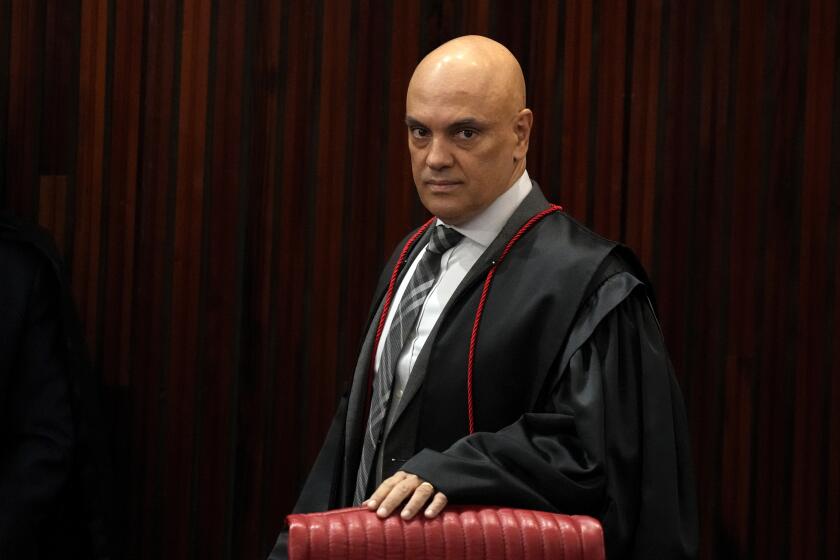U.S. Needs New Spending Priorities
During the last half century, America defined its priorities in geopolitical terms. America’s obsession was to contain the Soviet Union and win the Cold War. It has succeeded, beyond its wildest dreams, emerging as the world’s only military superpower. But it is no longer the only economic superpower. Indeed, at the very peak of its geopolitical triumph, the nation is teetering on the brink of economic decline.
The signs are everywhere. Anemic productivity growth. Declining shares of world markets. Falling real wages for most workers. Widespread poverty among children. Thirty million homeless and 37 million citizens without health insurance. A woefully inadequate education system. The savings and loan debacle. By almost any benchmark, the American economy confronts serious economic difficulties not shared by other advanced industrial countries. Small wonder that American consumers and investors are suffering from a crisis of confidence that has thrown the economy into a recessionary quagmire.
At this critical juncture, America needs conversion--not only in the narrow sense of transforming military factories and personnel to commercial pursuits, but in the broader sense of shifting to a new policy agenda to secure a prosperous economic future.
An essential step in the conversion process is a change in national spending priorities. During the last 20 years, America invested a smaller percentage of its output in plant and equipment than most other advanced industrial nations. New additions to the nation’s productive capital stock were a smaller fraction of output in the 1980s than they were in the preceding two decades.
Confronted with such evidence, many argue that the U.S. economic problem boils down to a cost-of-capital problem. There was some merit to this position in the 1970s and 1980s, when the cost of capital was higher in America than in either Europe or Japan. But the gap has now disappeared. Interest rates are sharply lower, and further cuts are unlikely to provide much of a boost to wary consumers and investors. Moreover, because of their precarious finances, many banks are unwilling to lend to all but their best and biggest customers. Under such circumstances, expansionary fiscal policies are the best medicine to stimulate economic growth.
Beware, however, of tax breaks--a conservative bromide to jump-start the economy. America’s economic ills are not the result of too much government, but of too little investment both private and public. The experience of the 1980s shattered the myth that tax cuts for the very rich would foster investment and lift all ships on the swells of a rising tide. Fortunes grew at the very top, but real family income fell for everyone else. Meanwhile, the national saving rate hit an all-time low and the net national investment rate continued to falter. The supply-side failed to supply anything, and the trickle-down never quite got around to trickling down.
A broad-based capital gains tax cut would definitely make the rich richer, but there is no evidence that it would promote productive investment. If the White House and Congress are serious about the goal of using tax policy to boost investment, they should be debating a sensibly targeted capital gains tax cut restricted to certain kinds of long-term investments, such as venture-capital investments, a targeted investment tax credit and a more generous R&D; tax credit. The fact that they are debating none of these options suggests they are more interested in the politics than the economics of tax policy.
What about Democratic proposals for middle-income tax relief? Tax cuts for the middle class are desirable as part of an overall tax package increasing tax rates on upper-income groups and restoring greater equity in the tax burden. But they are not justifiable as a means to stimulate the long-run growth of the economy. If the President and Congress are serious about using middle-income tax relief to propel the economy out of its recessionary doldrums, they should be talking about temporary measures that are easily reversible once the economy begins to recover. Instead, they are debating permanent measures that will further denude the government of revenues to invest in the physical, human and scientific capital on which future economic competitiveness depends.
Meanwhile, the Administration and Congress are overlooking the most obvious prescription for both the long-run wasting disease and the short-run recessionary headache from which the economy is suffering--namely, increased federal spending on the nation’s infrastructure and basic social needs. According to a recent study by the Economic Policy Institute, the share of the nation’s economy invested by the federal government in education and training, children’s programs, infrastructure, and civilian research and development has plummeted by 40% since 1980. America now ranks behind all its major competitors in each of these categories. The time is overdue for reversing these trends.
An emergency federal spending program to repair the nation’s bridges, highways and airports, combined with a temporary extension of unemployment benefits, could cure the economy’s recessionary malaise and provide the groundwork for its long-term revival. Such a spending program would destroy last year’s budget deal, but that hardly matters since one of its basic assumptions--the existence of a Soviet military threat--is obsolete.
Initially, additional federal spending on infrastructure and extended unemployment benefits would increase the budget deficit, but additional deficit spending, not a deficit-neutral tax break as some Democrats have proposed, is what’s needed to prime the pump of recovery. Over the longer run, once the economy hits its stride, direct military savings to peaceful objectives, and to increase government revenues for necessary public investment and essential social programs, such as health care. Such a package will inevitably require higher, not lower, levels of taxation.
Perhaps the greatest danger confronting the American economy today is the calculus of electoral politics. A short-term political scramble to cut taxes could easily undermine fiscal sanity, squander the peace dividend miraculously placed in our hands, and perhaps worst of all, further degrade the public level of political and economic discourse.
Abroad, America’s allies worry that it has lost its way. Will America, like the other military superpower, ultimately defeat itself? In the worlds of a contemporary Japanese novelist, “Is America a test run for the decline of the human race?” Perhaps. It all depends on the policy choices the nation makes at this turning point in its economic history.
More to Read
Inside the business of entertainment
The Wide Shot brings you news, analysis and insights on everything from streaming wars to production — and what it all means for the future.
You may occasionally receive promotional content from the Los Angeles Times.






